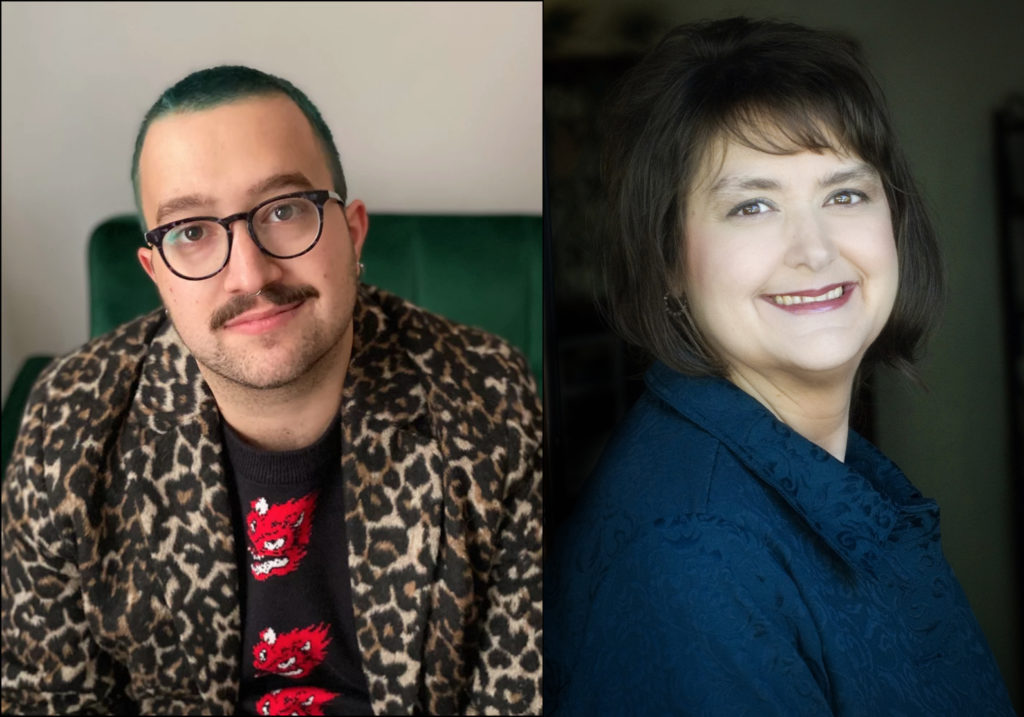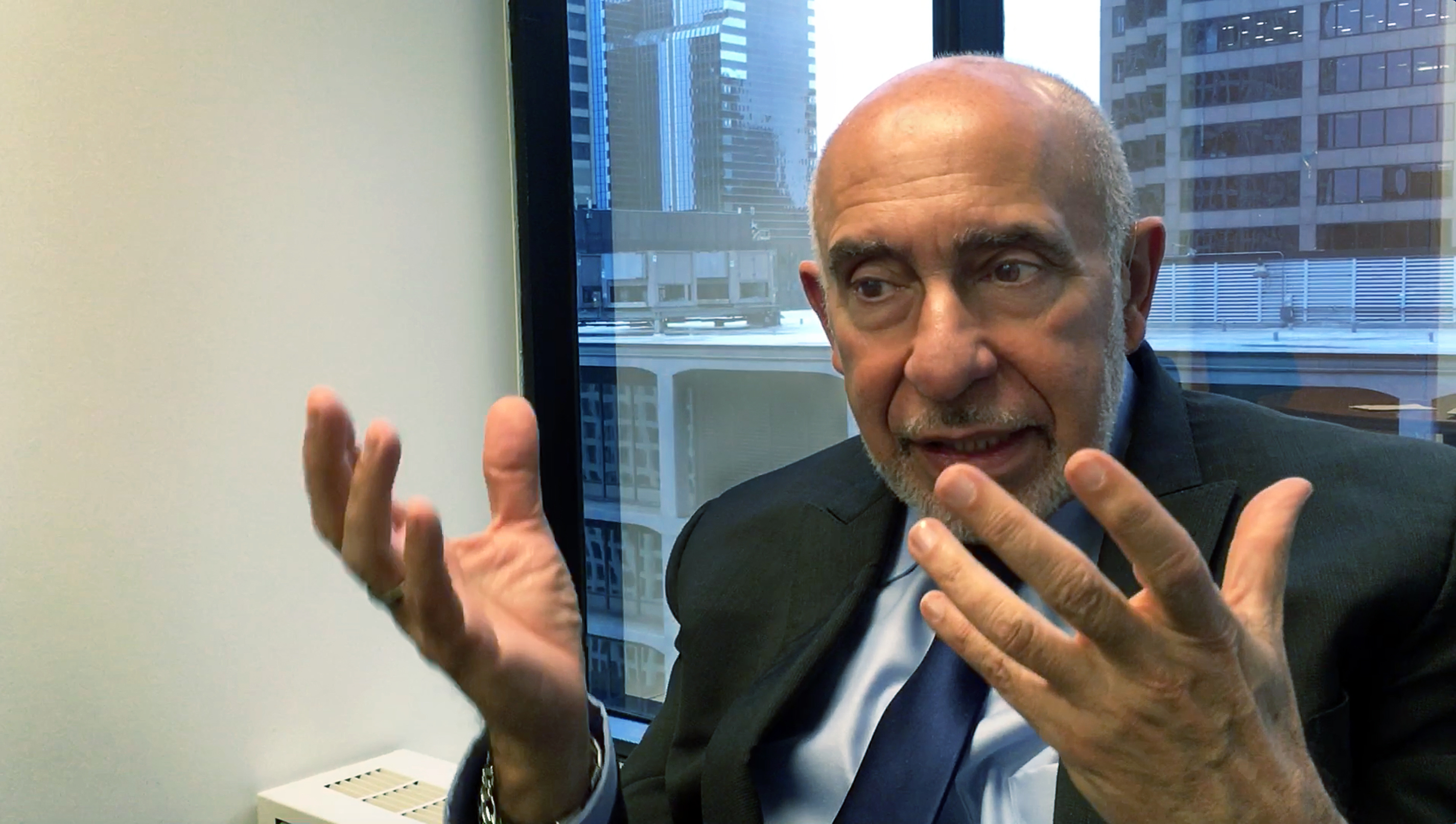Covering the LGBTQ community, and its haters
CHICAGO – Adam Rhodes, the social justice reporter for the Reader, said the importance of re-examining how we cover anti-LGBTQ groups is matched by a reckoning with how we cover the gay community.
“The media industry has just started to give a shit about trans people,” he said. “We’ve been trained to not care about them.”
The Southern Poverty Law Center tracked 70 anti-LGBTQ groups in 2019 – a startling 43 percent increase year-over-year. The nonprofit group didn’t shy away from pointing blame at the Trump administration.
“The Trump administration has demonstrated a clear willingness to embrace their leaders and their policy agenda,” the SPLC stated in its 2019 annual report “The Year in Hate and Extremism”.
Rhodes said it’s the media’s responsibility to connect the dots that way, and to plainly describe hate groups as what they are.
“Media, for whatever reason, has failed to really call a spade a spade, especially when human rights are being implicated,” he said. “There’s a side where someone has human rights, and a side where it doesn’t.”
That said, we need to cover hate groups, Rhodes said. The public needs to know about them, and the threat they pose.
“We need to be covering the issue of extremism and hate groups,” he said. “But they need to be prepared to label things as extremism when it’s extremism. The media has dropped the ball to say the least.”

‘I’ve been gaslighted my entire career’
Rhodes, 27, said he’s “spoiled” to work for the Reader, a liberal, alternative weekly publication that’s noted for its literary style of journalism. Thanks to a grant from the Field Foundation, Rhodes was brought on for a year as the Reader’s first social justice reporter.
He earned a master’s degree from Northwestern University’s prestigious Medill School of Journalism, with a focus on social justice and investigative journalism.
Rhodes has worked in more traditional newsrooms, where pitching human rights-focused stories was like pushing sand up a hill.
“Throughout my career, there have been times I’ve pitched articles that related to a small population of people being mistreated, or a greatly underreported issue an editor didn’t know about, and I’d need to convince [the editor] she’s not a racist before I could even make any headway,” Rhodes said.
He said when he pitched a story on babies born intersex and receiving cosmetic genital surgeries that effectively chose which gender they’d be, he was told it was too niche of an issue.
Then he told the editor 1.7 percent of American babies are born different from what’s considered a typical boy or a girl, prompting surgeries to “normalize” them.
“When [the editor] heard that number, then it was a good enough story – not because we were talking about surgeries being performed on babies,” Rhodes said. “Those surgeries have immense consequences for these people.”
In July, Chicago’s very own Ann & Robert H. Lurie Children’s Hospital was the first hospital in the nation to apologize for performing such surgeries, calling the approach “harmful and wrong.”
“I don’t have to convince Karen that these issues are issues,” Rhodes said of Karen Hawkins, the Reader’s co-editor-in-chief. “Karen has that trust in me. It’s a little maddening to learn I’ve been gaslighted my entire career.”
He struggled to come up with the best advice for a journalist in a more traditional newsroom.
“It’s a mix of needing to hang with it and needing to find the right editor,” he said. “There are some publications and some editors that, no matter how much background and digging you give them, it’s going to go over their head.”
He said it’s bittersweet to see media outlets winning awards when they do elect to cover those issues.
“Unfortunately,
that’s sometimes how these organizations are convinced to cover marginalized
groups,” Rhodes said.
“If we investigate wrongdoings toward marginalized communities, we’ll get a
prize.”
Yet despite potential acknowledgment from their peers, leadership is often hesitant to take on such issues, Rhodes said.
“For
whatever reason, that doesn’t translate to media owners giving more weight to
that coverage,” he said.
“They’re afraid of the white people in their lives not buying newspapers and
ads anymore.”
Check your stylebook
NLGJA: The Association of LGBTQ Journalists, states in its stylebook that while Journalism 101 teaches us to report both sides of issues, “there are times when ‘balance’ doesn’t further understanding of the issues or the story.” The association advises reporters to get multiple perspectives. It recommends developing and using experts qualified to speak on subject matter, and then citing their expertise.
It urges that reporters be wary of sources’ bias and framing, and to apply the principle of First Do No Harm.
“Someone’s position might be biased on hatred. …” the stylebook reads. “… Consider any potential harm your story could have. By including individuals who speak only from opinion, you can authenticate their narrative or semblance of expertise.”
Genelle Belmas, an associate professor at the University of Kansas who teaches media law, said we perhaps have to go a step beyond simply weighing how much coverage to give hate groups.
“We need to have a moral discussion about journalism,” she said. “Is it time to shed the objectivity notion? Don’t we have a moral responsibility to call out hate and lies and all that stuff?”
Further, she said one of journalists’ chief goals is to give a voice to the voiceless.
“I often wonder if we’re asking the wrong questions,” she said. “If we’re going to give a voice to the voiceless, maybe that’s us. What responsibility do we have to push back? I think we need to be asking that question.
“I worry about my kids,” she continued, speaking of her students, “but I think I worry more about the society they’ve inherited.”
Rhodes: Focus on ‘the most vulnerable’
The Human Rights Campaign recently reported in early October that at least 32 transgender or gender non-conforming people have been killed by violent means this year, most of them Black and Latinx transgender women.
“We say ‘at least’ because too often these stories go unreported, or misreported,” the campaign said in a statement.
Most recently, 20-year-old Brooklyn Deshuna, a Black transgender woman, was killed in Shreveport, Louisiana, as a result of a gunshot wound. Hers was the fifth violent death of a transgender or gender non-conforming person in just 3 weeks, according to the HRC.
Rhodes said hate groups aren’t limited to those holding signs and organizing in chat rooms. He said police violence against transgender people is rampant, and that victims fear retaliation – or biased coverage if they actually open up to a journalist.
“I can’t tell you how many times as a reporter covering these issues, that somebody has cited horrible transphobic, homophobic, bigoted media coverage as why they won’t talk to me,” Rhodes said. “So much of my job is spent convincing people I’m not the one who’s going to hurt them.”
He said simply by considering sources – a victim and a police report – a reporter can glean who’s not sharing the whole story.
“It comes from an understanding of power, and who benefits from lying in this situation,” he said. “How would a transgender person stand to benefit from lying?”
Gay rights are one of many subjects in the crosshairs as confirmation of Supreme Court justice nominee Amy Coney Barrett would mean a 6-3 conservative advantage in the nation’s highest court – which will hear an argument in the case of the Affordable Care Act just one week after the general election.
Transgender people’s access to healthcare will hang in the balance. The Trump administration has already tried to do away with it.
“When we think of LGBTQ issues, we think of gay marriage and same-sex adoption,” Rhodes said. “Those issues concern the most affluent people in society. The people who are going to access those rights have the means to. We need to focus more on the most vulnerable members of the LGBTQ community.
“The media hasn’t even touched the surface of how queer issues need to be covered. It doesn’t see significant problems. It sees us as identities, and not people.”
Data loading …
In 1978, the American Society of News Editors began collecting newsroom demographic data, with the goal of helping U.S. newsrooms align their diversity with that of the nation’s population. The ASNE and Associated Press Media Editors merged to form the News Leaders Association last year. The NLA indicated in June that because only 17 percent of newsrooms solicited submitted their data in 2018, the initiative was halted so the surveying process can be re-racked.
Seeing opportunity in a moment of reckoning, the NLA is updating the survey to collect data not just on race, ethnicity and gender, but also gender identity and sexual orientation.
Such associations can only provide guidance, of course, so it’s up to each individual newsroom to choose to undergo reform.
Rhodes is skeptical.
“There’s no reason we should still be saying ‘First Black investigative reporter of this bureau’ ”, he said. “I’m flabbergasted at the refusal by media leadership to see diversifying its ranks as anything more than an imperative. It’s absolute trash.”
Christopher Heimerman is a former editor of the Daily Chronicle in DeKalb, Illinois, and freelance journalist covering media practices in the Midwest. He wrote the memoir “40,000 Steps” which details his war with alcoholism and the marathon he ran after rehab. He lives in DeKalb. Follow him on Twitter @RunTopherRun.

